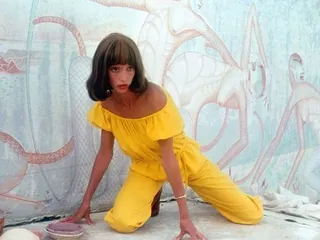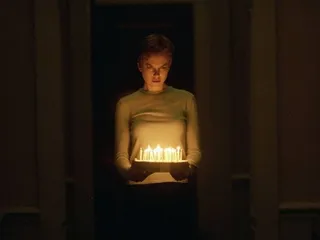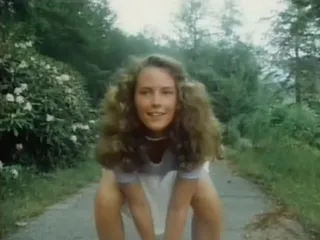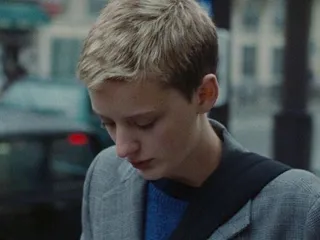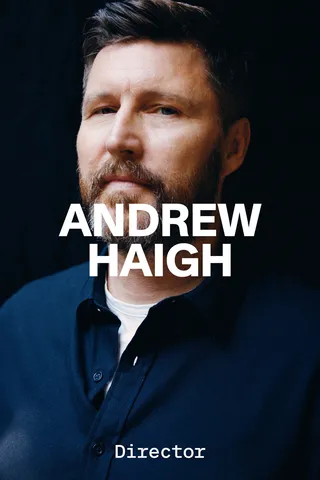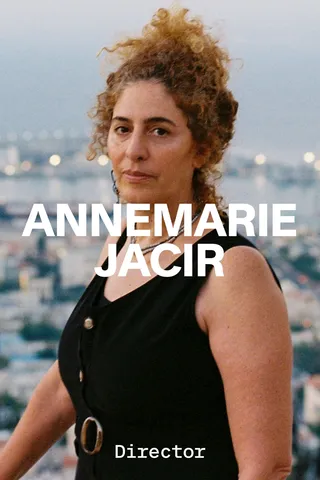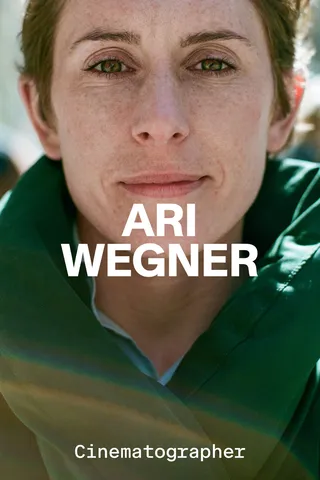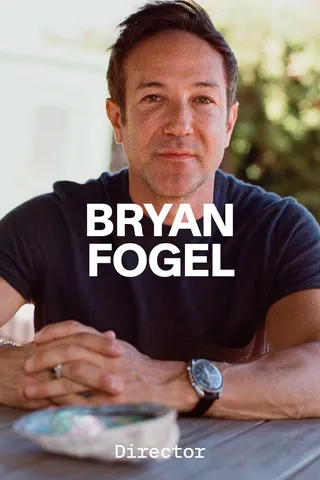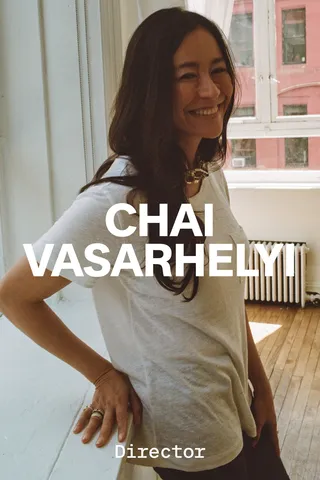Emma Cline
Best-selling novelist Emma Cline grew up believing movies offered “vital guidance to the mysteries of the adult universe.” In her books, from her breakout hit The Girls and story collection Daddy to 2023’s essential summer read The Guest, the California native explores the underbelly of patriarchal power and romantic obsession. Her film picks for Galerie follow suit, starting with Mia Hansen-Løve’s bruising coming-of-age drama Goodbye First Love (2011) and Joanna Hogg’s toxic-relationship postmortem The Souvenir (2019). As in her books, Cline also gives a generous, nonjudgmental hearing to flawed male protagonists, selecting cult oddities like Paul Mazursky’s divorce comedy Blume in Love (1973) and Ross McElwee’s heartbreak documentary Sherman’s March (1985). Seven decades of rare gems and left-field classics, selected and dissected with a novelist’s exacting sensibility.
MY FILM LIST
Click each title to discover our curator’s notes and where to watch
How many times did I watch this movie as a child? Enough to snap the ribbon on the VHS tape. Even though in some ways it’s a very straightforward hero’s journey, and even though it seemed to be a movie made for children, with the singing and the lion and the scarecrow and the tin man, there’s all the hallucinatory strangeness, like an unsettling dream, uncanny and bizarre. I looked, every time I watched it, for the rumored dead body that was supposedly visible in the forest scene—apocryphal but instructive, too: There might be hidden darkness along the path, even one that leads to the shining city. That current of submerged menace, even nightmare, spoke to something in my child self that I couldn’t name yet.
{{ All Items }}Liv Ullmann and Bibi Andersson have two of the very best faces. When I was 20, I took an Ingmar Bergman scene-study class, held in a woman’s garage, and memorized a monologue from Persona—certain lines still come to me, unbidden. The whole experience was poignant: the stark strangeness and otherworldliness of Bergman’s films, contrasted with the ordinary, earthbound group of strangers sitting around a Culver City garage on Tuesday evenings. Bergman’s movie is like a foundational text, endlessly generative: 3 Women is so important to me, too, Robert Altman’s California desert remix of Persona and the watery diffusion of female identity.
{{ All Items }}Could this be the best Los Angeles has looked on film? Or maybe it’s just my favorite cinematic version of L.A.—rangy and bizarre and out of time, a maze of a city filled with strange interiors and structures and the cryptic characters who inhabit them. I like the shaggy dog pacing, the detective story that really just offers a background scaffolding for the minor but indelible interactions and gestures: Elliott Gould feeding a cat, listening to a song on the car stereo, dinking around on a harmonica.
{{ All Items }}Would a character like Blume hold a movie now? Probably not—and Mazursky’s movie, too, feels out of a lost era, good-natured and melancholy and somewhat bloated and meandering, its ending ambiguous. It’s a 1970s film through and through—the California light and Kris Kristofferson in a VW and a long-suffering wife’s sudden interest in yoga and liberation. George Segal as Blume is so charming and so narcissistic and so desperate—he tries to win back his wife, but also finds himself helplessly fond of her new boyfriend, the pair of men stoned and giggling, picking her up in her yellow convertible. Blume eavesdrops outside a therapist’s office, stumbles blindly through his own life, dealing with the chaos of his own making. Our attempts to love other people are messy and selfish and comical in their wrongheadedness—but the movie makes you feel that there is a perpetual tenderness, too, that transcends all our foolish desperation.
{{ All Items }}I love McElwee’s tone of shambling self-deprecation and good-natured horniness, and his naked yearning for love as a totalizing experience, a subject worthy of our attention. I think about images from this movie so often—a woman hiking up her dress to laughingly demonstrate her leg exercises for cellulite, a woman on roller skates, skating in circles on an empty, misty road. There are all of these amazing female characters, and McElwee allows himself to be pathetic and admiring in the face of them. The film is a self-portrait of McElwee revealed through his generous gaze on others, the Barry Hannah–esque characters that populate his personal map of the South.
{{ All Items }}What a harrowing documentary, so viscerally upsetting. It’s the artist’s origin story told as a horror film. What is hidden inside a family, what psychological violence does the structure allow for? Crumb is a fascinating character, and even more so seen in the context of his torqued family unit. In Zwigoff’s documentary, I see the ability of humans to both inflict great pain on each other, and their ability to cobble together some way to continue living. Art isn’t a solution, or even much of a salve, but it does offer moments of escape, a means of rigging up an exit. By the end, you think of Crumb as the sole survivor of a catastrophe, badly wounded and barely limping to safety.
{{ All Items }}It’s 1978, and Moss’s documentary follows a group of river guides and friends on an idyllic rafting trip. They’re in the full bloom of gorgeous youth—tanned and carefree, fully inhabiting their strong bodies, lovers and adventurers completely filled with life. Then Moss revisits a few of his subjects 25 years later. It’s so moving to see the ways that aging and misfortune and the plain relentlessness of life works on Moss’s subjects, and, of course, on us. Even the warmth and flickering film footage of the ’70s, contrasted with the digital flatness of Moss’s later footage, is a vivid reminder of the losses inherent in the forward march of the years.
{{ All Items }}New York, Nicole Kidman carrying a birthday cake in a dark room, her face lit by candles, the shadowed tunnels of wintry Central Park, a black hole that becomes a portal between life and death. There’s a mysterious third rail in this movie that, for me, can’t be explained in a straightforward description of the plot, that ineffable otherness that elevates a movie into the realm of art. The logic that underpins the story is emotional, not realistic—and feels truer for it, more akin to the actual workings of a grieving mind. Jonathan Glazer’s vision is totalizing and completely successful, and Harris Savides’s unmatched eye turns each scene into a painting, one of the best-ever cinematographers making virtuosic work. As a director, Glazer seems to have such control, his cinematic worlds so tightly woven and enveloping—I think of this as a perfect jewel of a movie, like an immaculate diorama animated with a kind of mystic life.
{{ All Items }}I went to see this at the IFC Center alone, deep in the worst of a lonely and humid New York summer. The movie did exactly what I needed it to: took me out of myself and my self-pitying misery—what a relief—while at the same time sparking memories and emotions, making life seem alive again, meaningful. Hansen-Løve’s movie sensitized me to a current of deep feeling that was both universal and achingly specific—and she manages the impossible: telling a story of first love that honors the teenage scale of drama and intense emotion, while never seeming cliché or melodramatic.
{{ All Items }}Joanna Hogg is a tremendous artist, and this semi-autobiographical film is endlessly inspiring—I feel like she fulfills the project of art as a means of illuminating the self, using it as a tool to explore and revive and attempt to inhabit the past. Like something close to magic, bringing back the dead. The Souvenir works not only as a brilliant, moving film, but as a piece of Mike Kelley–esque conceptual art—can you re-create your vanished personal history? Conjure the lost self? The set was dressed with the actual furniture that Hogg’s young self owned, and photographs of views from her old apartment filled the set windows, the lead actor reading Joanna Hogg’s diary as character guidance. Hogg’s filmmaking process, and the result, fills me with deep awe.
{{ All Items }}
“How many times did I watch this movie as a child? Enough to snap the ribbon on the VHS tape.”
RELATED MATERIAL
Essays, interviews and other connections
![Born Again]() Born AgainRead
Born AgainReadThe psychological acuity behind Jonathan Glazer’s polarizing reincarnation drama Birth
By Matt Wolf
![Tug of War]() Tug of WarRead
Tug of WarReadRoss McElwee’s landmark documentary of the mediated self asks how we proceed after annihilation
By Katya Apekina
![Crying With Mia]() Crying With MiaRead
Crying With MiaReadThe profound effect of director Mia Hansen-Løve’s anti-manipulative cinema
By Lisa Rovner
